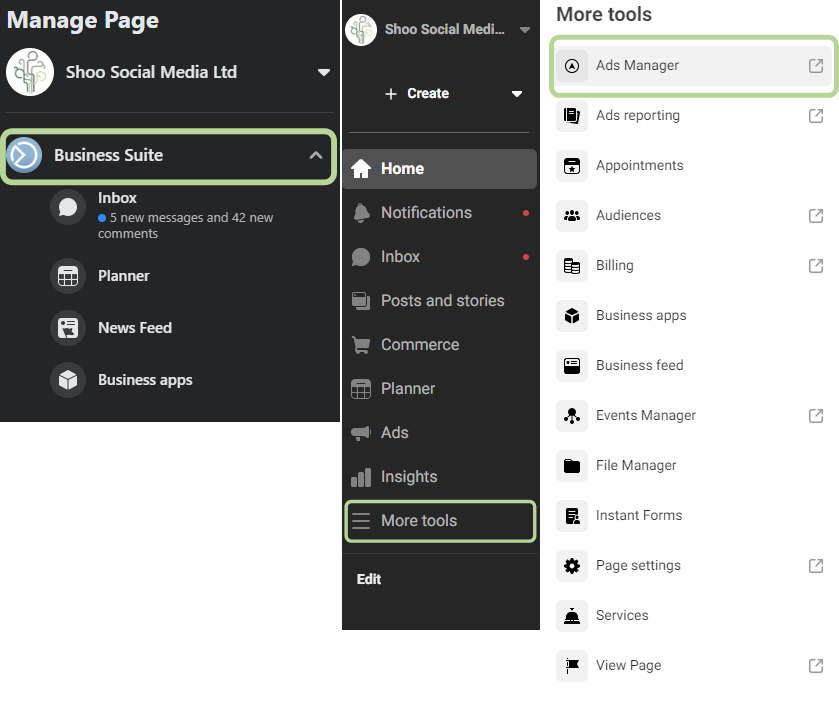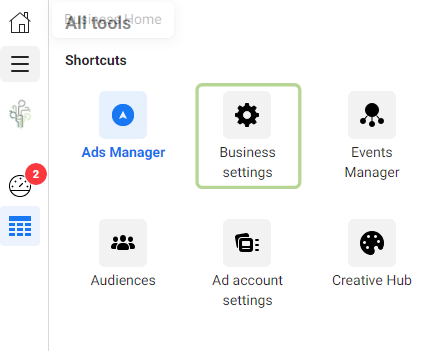Facebook Ads Manager – the definitive guide
Originally posted 7th October 2020 and updated.
Did you know that more than three million businesses around the world use Facebook and its Facebook Ad Manager tool to market and advertise themselves?
We live online, on social platforms including Facebook that provide the ideal opportunity to get in front of millions of people quickly and easily. Facebook advertising can be incredibly beneficial to your business.
Let us tell you why Facebook advertising is a no brainer.
Facebook ads manager
With advertising via Facebook, it requires more than the creation of an infographic, video or alluring piece of content. You need to be fully aware of how best to reach the most appropriate audience, how to make ads that truly work, and how to track success.
Facebook Ads Manager is a vital tool, and this guide has been designed to ensure you can use this tool effectively and efficiently.
How to begin
The first thing you need to do is access Facebook business suite. You can access this through your Facebook page, or just by searching business.facebook.com. Then head onto more tools >Ads Manager, then you’ve made it to your ads manager.
You will then be able to see an overview of past and present adverts, and will also be able to easily manage your advertisement settings, plans and schedules.
Give your team access
The next step is to ensure that everyone who needs access to the ads account can log on and carry out the relevant tasks. You can easily do this via the users section under business settings and assign them the relevant roles and responsibilities.
Creating Facebook ads
There are numerous buttons, sections and metrics that can be viewed within the Facebook Ads Manager, but it makes little sense to list them all here. You should navigate the manager yourself, become familiar with the layout, and then understand what area(s) you are most likely to require going forward. It is incredibly unlikely that you will need to make use of them all.
The idea of creating ads may seem daunting but, in actual fact, it’s very easy to get to grips with.
Start by selecting the button that says ‘Create Ad’ and then choose the relevant campaign goal (this will generally be promoting your company page or highlighting a particular product or service).


The real skill here is using the correct copy that will draw people in, encouraging them to take action by clicking on your post. It is certainly worth your time to write any content in a Word document as opposed to typing it directly into the ad post. This allows you to proofread, whilst also giving you a better idea of how the copy will look to the consumer.
Doing this dramatically reduces the number of times you will have to amend your posts, and if you ever need to edit an ad, this can be done quickly and easily.
Defining the details
Once you understand the advert you want to post and what you want it to achieve, you need to ensure that you don’t overspend and also guarantee you will reach the people who will find your post valuable.
This often requires a lot of trial and error. By tinkering with ad placement, spend, publication schedule, and target audience. By monitoring your reports, you will make the most effective decisions in both the short- and long-term.
Reports
It is worth having some certain goals – reach, spend, clicks, website visits – even if they are very rough objectives. You can redefine these over time, so don’t worry if they are wildly off at the outset.
By keeping track of your reports, and then modifying your ads – in terms of content, tone and overall message – you will be able to see what content best engages your audience.
The amount of data Facebook stores in relation to ad performance is incredibly extensive. Therefore, it may be worth figuring out the metrics that matter most to you and your team, making those your primary focus.
This information can then be saved into files (if you want to send them to other people, or put them in a report etc) and can also be put into charts to make the data easier to read. This can also be done to better understand key features regarding your audience and their behaviours.
Additional things to note
It is worthwhile exploring Facebook’s Creative Hub website to familiarise yourself with the array of ad templates and formats. In addition to this, the website conveys the latest information around what works well, what doesn’t, and what changes are being made to the Facebook Ads section.
It is also important to remember that the Facebook Ads platform is being modified and enhanced all the time, so to see the best results, it pays to keep track and keep learning.

Guest Blog by Francesca Haigh, Paid media co-ordinator at Shoo.
Originally written by Chris Morris, CVO at Shoo in October 2020, updated in November 2021.
To learn more, contact us at Shoo today.





